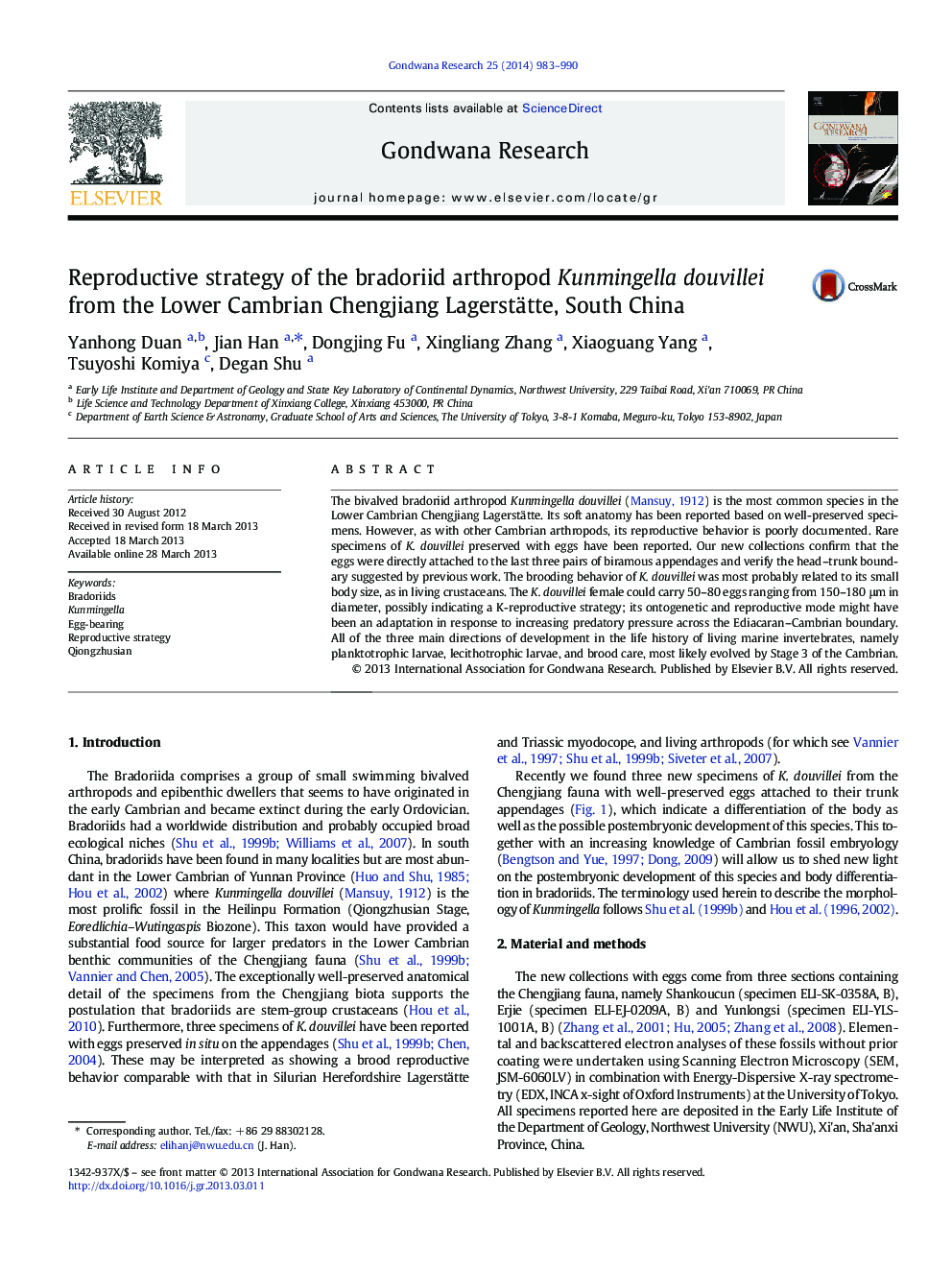| Article ID | Journal | Published Year | Pages | File Type |
|---|---|---|---|---|
| 4726968 | Gondwana Research | 2014 | 8 Pages |
•We described a bivalved Cambrian arthropod preserved in-situ with eggs.•The eggs of Kunmingella were attached mostly to the endopods.•Functional differentiation of appendages and body tagmosis is suggested.•The fecundity of the female Kunmingella is estimated.•We suggest a possible K-reproductive strategy for Kunmingella douvillei.
The bivalved bradoriid arthropod Kunmingella douvillei ( Mansuy, 1912) is the most common species in the Lower Cambrian Chengjiang Lagerstätte. Its soft anatomy has been reported based on well-preserved specimens. However, as with other Cambrian arthropods, its reproductive behavior is poorly documented. Rare specimens of K. douvillei preserved with eggs have been reported. Our new collections confirm that the eggs were directly attached to the last three pairs of biramous appendages and verify the head–trunk boundary suggested by previous work. The brooding behavior of K. douvillei was most probably related to its small body size, as in living crustaceans. The K. douvillei female could carry 50–80 eggs ranging from 150–180 μm in diameter, possibly indicating a K-reproductive strategy; its ontogenetic and reproductive mode might have been an adaptation in response to increasing predatory pressure across the Ediacaran–Cambrian boundary. All of the three main directions of development in the life history of living marine invertebrates, namely planktotrophic larvae, lecithotrophic larvae, and brood care, most likely evolved by Stage 3 of the Cambrian.
Graphical abstractFigure optionsDownload full-size imageDownload as PowerPoint slide
